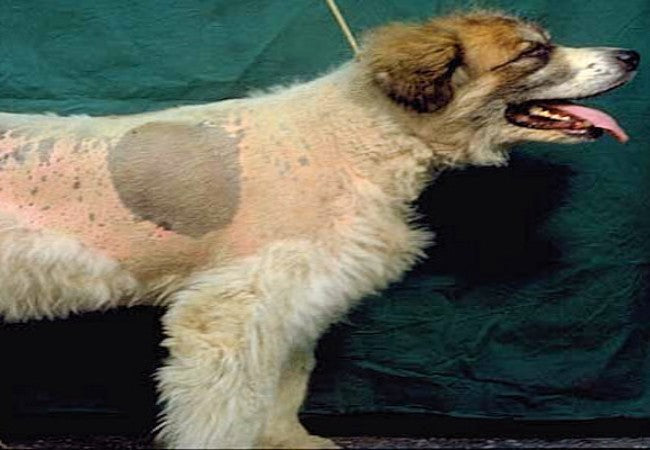2025 Veterinary Guide to Canine Hyperandrogenism🐶🩺

In this article
2025 Veterinary Guide to Canine Hyperandrogenism🐶🩺
By Dr. Duncan Houston BVSc
🔍 Introduction
Hyperandrogenism involves excess male sex hormones—commonly testosterone or DHT—affecting both male and female dogs. This in-depth 2025 guide from a veterinarian explores its causes, symptoms, diagnosis, treatment, and prevention. 🩺
💡 What Is Hyperandrogenism?
It's a condition where androgen levels—produced by testes, ovaries, or adrenal glands—are abnormally high, whether due to tumors, enzyme dysfunction, or external hormone exposure.
🐾 Who Is at Risk?
- Intact males (studs), particularly with testicular tumors or enlarged prostates.
- Spayed females with adrenal or ovarian androgen-secreting tumors.
- Breeds: Pomeranians, Chow Chows, Poodles, Keeshonds, Samoyeds, Akitas, Siberian Huskies.
- Dogs with Cushing’s disease—excess cortisol may increase androgen production.
🚨 Common Signs
- Non-inflammatory symmetric hair loss (neck, trunk, tail, thighs).
- Greasy, scaly skin; dandruff; darkened or oily patches.
- Hyperpigmentation, especially around the tail base (“stud tail”) in males.
- Behavior changes: aggression, increased sexual behaviors or urges.
- Female-specific: clitoral enlargement, abnormal cycles, vaginitis.
- Male‑specific: enlarged prostate, sperm abnormalities.
🔬 Diagnosis Process
- Complete exam + medical history including breeding status, behavior, and skin signs.
- Bloodwork: hormone panels (testosterone, DHEA-S, ACTH stimulation) + CBC, chemistry, urinalysis to rule out Cushing’s or thyroid disease.
- Imaging (ultrasound/radiographs) to locate adrenal or gonadal tumors.
- Advanced tests: karyotype for intersex, cytology if skin infections are suspected.
🛠 Treatment Options
1. Neutering / Spaying
- Recommended for intact males—often resolves signs and stops androgen production.
- Spaying and removing ovarian tissue or adrenal masses in females if tumors are present.
2. Tumor Treatment
- Ovarian/testicular tumor removal or adrenalectomy when indicated.
- Medical adrenal suppression if surgery isn’t feasible.
3. Address Underlying Conditions
- Treat Cushing’s disease with drugs like trilostane; this may reduce adrenal androgen excess.
- Supportive skin care: medicated shampoos, oils, and secondary infection management.
📈 Prognosis
- Neutered dogs generally improve within weeks, with skin regrowth and normalized behavior.
- Tumor-based cases vary—prognosis depends on size, malignancy, and complete removal.
- Ongoing supportive care is often needed for chronic or hormonal imbalances.
🛡️ Prevention & Owner Tips
- Consider neutering if not breeding—lowers the risk of hyperandrogenism and stud tail.
- Monitor breeds prone to Alopecia X or endocrine imbalances; early intervention helps.
- Routine wellness checkups with hormone screening for dogs showing early signs.
- Prompt veterinary care for skin or reproductive changes for accurate diagnosis.
🔧 Tools & Services
- Ask A Vet App: 24/7 vet support for behavior, reproduction & endocrine concerns 📱
✅ Final Thoughts
Hyperandrogenism, while uncommon, can significantly affect coat, skin, behavior, and reproductive health. Diagnosing root causes—particularly tumors—is vital. Neutering/spaying resolves many mild cases; tumor removal and endocrine therapy address more serious ones. With proper vet care and supportive tools, dogs can regain skin and behavioral health. 🐾❤️
Download the Ask A Vet app today to get professional support in managing endocrine imbalances and your dog's well‑being in 2025 and beyond! 🩺📱






